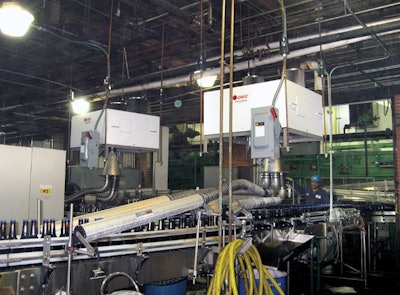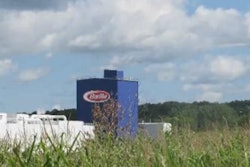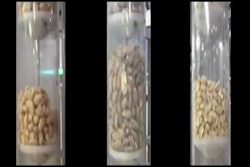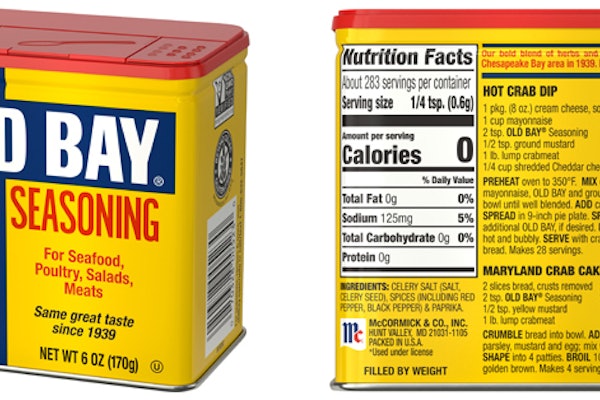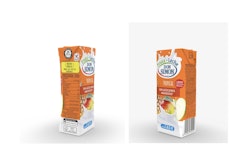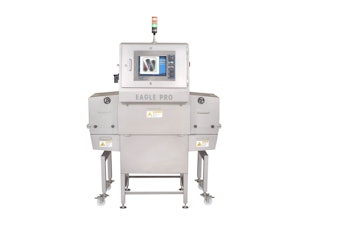Lion Brewery, Wilkes-Barre, PA, was encountering some problems with
excess moisture on the bottling lines. When its malt beverages exited
the pasteurizing tunnel and were conveyed to the labeling station,
soapy water was sprayed onto the conveyor belts for lubrication. But
the soapy water also was coating the bottles and causing problems with
label application. Some of the labels were positioned askew or
displaying an unsightly bubbling effect. The wet environment also was
creating moisture pockets under the bottle crowns, which sometimes led
to discoloration around the crowns.
Lion’s head of maintenance Ken Houston notes, “In recent years, our
line speeds have doubled. We were producing 300 bottles per minute, and
now we’re up to 600 to 700 per minute.” Lion’s production rate
increases have made the drying challenge even greater. Four lines of
tightly packed 7-, 12-, 16-, and 24-oz bottles each are engineered to
run at 700 bpm with Harland (www.harlandamerica.com) labelers. And
there were repeated labeler shutdowns to resolve crooked and bubbled
label difficulties.
Of the four bottling lines, three were using air comb-type air nozzles
and compressed air to blast off bottle moisture, with little effect.
Houston notes, “The problem with wet bottles had been going on for some
time. We tried air nozzles, vortex nozzles. Some worked a bit better
than others, but nothing solved it. We use about 200 cubic feet per
minute total of compressed air for all the lines at our facility. But
even with 50 horsepower of compressed air, we don’t have enough air to
dry bottles effectively at our new higher line speeds.”
Better air volume
As part of the brewer’s ongoing investment in adopting new
technologies, Houston contacted Chris Pasquali at manufacturers’
representative agency Technical Products and Services, Inc.
(www.fluidproducts.com) to discuss possible solutions to the moisture
problem.
After reviewing the situation, Pasquali concluded, “The Sonic Air
system on line four was the best-performing system they had. I find the
Sonic systems out-perform compressed air systems because of the volume
and dryness of the air they deliver. We can output much more volume for
an equivalent cost than we can with compressed air. More volume equates
to being able to handle faster line speeds and larger areas. And the
special air knife design helps maintain the exit-air velocity for
‘knife-like’ precision application of the air onto the target.”
But
Lion had purchased its single Sonic system before local Sonic
representation was established, and the orientation of the air knives
was not ideal. Pasquali said, “By suggesting some minor orientation
changes and a more efficient method of getting air from the blower to
the knives (less flex hose), the performance increased enough to
satisfy their requirements. Factoring in operating and maintenance
costs, the Sonic system can hasten payback time, particularly with the
increasing costs of electricity.”
Consequently, Lion decided to install three more complete blower/knife
systems from Sonic Air Systems (www.sonicairsystms.com) for the
remaining bottling lines. Each system uses a 20-HP motor, two
42-in-long side air knives, and two 6-in crown air knives. Lion placed
these systems in an atypical position—above the line. “We hang the
blowers above because real estate is extremely important to us,”
explains Houston.
In addition, Lion installed optional acoustical enclosures to address
noise concerns, keeping sound levels under 80 decibels at a distance of
one meter (3.3 ft).
Houston sums up, “While Sonic equipment saves us maintenance on the air
systems for sure, our choice was labeling-quality-related. The bottles
are a lot drier than with compressed air.”
